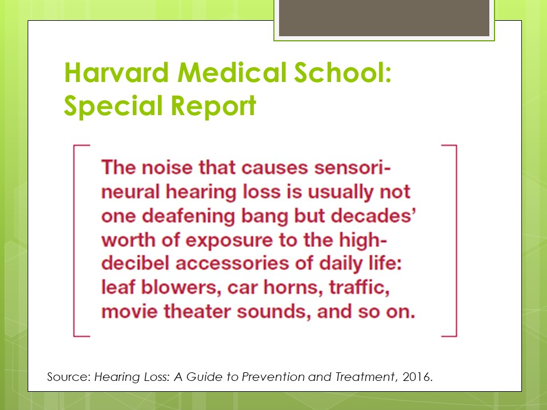From the D.C. Council Committee of the Whole Hearing on July 2, 2018. testimony from Jamie Banks, Quiet Communities (download PDF here)
Banks: Thank you, Chairman Mendelson and members of the Council. My name is Jamie Banks. I'm the Executive Director of Quiet Communities. We're an independent, nonprofit organization. Our mission is to help transition landscape maintenance to low-noise, zero emissions practices, with positive solutions to protect the health of workers, children, the public, and the environment.
I was trained as a healthcare scientist. I worked for many years in health economics outcomes and policy before turning to environment. I hold master's degrees from MIT and Dartmouth Medical School, and a PhD from the University of Kent in the UK. I have been asked to testify about the impact of leaf blower noise on communities and on the health and wellbeing of community residents.
Today gas-powered leaf blowers are ubiquitous throughout the country. They are widely used in the commercial landscaping industry, today worth about 66 billion dollars in annual revenues. While all gas blowers emit all manner of unhealthy pollutants, today we're focusing on the noise they emit. Noise emitted from gas blowers is part of the cumulative environmental noise in which we all live.
Today large numbers of people are involuntarily exposed to levels that are harmful to both hearing health and general health. Increasing concerns about environmental noise levels have earned them the label, “the new secondhand smoke”.
Many health organizations, as you'll see from the slide are concerned with the noise produced specifically by this piece of equipment, the gas blower, and its potential health effects.
Here's an example from a special report that Harvard Medical School wrote.
And I think you can read the quote. It says, "The noise that causes sensorineural hearing loss is usually not one deafening bang, but decades worth of exposure to the high-decibel accessories of daily life that includes leaf blowers and other sources.”
Extensive evidence from the medical and scientific communities has shown that high levels of noise have adverse health effects ranging from heart disease and hypertension, to sleep disturbance, to psychological, cognitive, and learning issues, as well as plain old annoyance.
Low-frequency noise is particularly concerning. In its community noise guidelines, the World Health Organization states, "If the noise includes a large proportion of low-frequency components, values even lower than the guideline values will be needed because low-frequency components in noise may increase the adverse effects considerably.”
The effects of excessive noise are particularly acute for children, seniors, people with hearing disorders and neurological conditions like autism, and sensory deficit orders. These people can actually experience pain from this type of noise. And those who are arguably among the most exposed, the more than one million workers in the landscape maintenance industry, over half of whom are Hispanic and Latino. For those operators, noise at the ear is much louder than noise reaching anyone else.
Grif alluded to these seven popular models of gas leaf blower models. They're shown here on the slide. More than 100 decibels at the operator's ear. Up to 83 decibels at 50 feet. Two are among the three gas blowers that were tested in the acoustics study. These levels are orders of magnitude above occupational and public health standards. That means ten times a hundred times a thousand times.
To examine the community impact of gas and battery blower noise, we applied the sound levels that were recorded in the acoustics study over a distance, and applied them to a hypothetical urban neighborhood with 1/8th acre zoning. For each of the seven blowers tested, we calculated the number of homes affected by unhealthy levels of outdoor daytime noise, defined as 55 decibels by the World Health Organization and Environmental Protection Agency.
As you can see on the slide, for the battery blowers, the two at the top, unhealthy noise will affect between one home and six homes depending on their decibel rating. For the quietest gas blower, up to 23 homes are affected. For the other two gas blowers, up to 91 homes are affected. This is because you're squaring that radius of the circle and getting a much wider area of effect.
In everyday terms, this means that unhealthy noise from a single gas blower can intrude into an area encompassing more than 90 homes, and presumably any outdoor playgrounds, parks, and schools in the neighborhood. This situation would be exacerbated if more than one blower is used on a property, or when several properties in the neighborhood are being maintained.
The distress caused by gas blower noise has prompted 170 communities across the country to enact legislation to ban or restrict their use. Many others are making similar efforts. Beyond the community level, the state of Massachusetts recently put out the nation's first technical specifications for commercial-grade battery-powered equipment to encourage state agencies, public schools, and municipalities to transition.
[Editor’s Note: Miss Banks’ statement submitted to the Committee at the time of the hearing from which she was reading when her time ran out, concluded as follows:
“Big-campus universities including Harvard, Yale, Florida State, NC State, Cal State, and University of Texas, Austin are transitioning form gas to battery-powered equipment. In 2016, South Pasadena, CA became the first city in the nation to maintain all municipal lands and some routine work on its golf courses, year round with battery-powered equipment. The town of Southampton, NY is doing the same. More than 140 companies, some of which you’ll hear from today, are now operating with battery-powered equipment and manual tools at competitive prices. The National Association of Landscape Professionals named battery-powered equipment among its top trends for 2018, stating that “Many lawn mowers, leaf blowers, and similar equipment feature low or no emissions, are battery-powered, and are quieter.” Finally the Outdoor Power Equipment Institute has formed a committee and is developing standards for battery electric equipment.]




